In recent years, the sandwich grill industry has experienced a surge in popularity, both in Europe and the United States. The convenience, versatility, and delicious flavors of these portable grills have captivated consumers, leading to a dynamic market that is constantly evolving. As we delve into the intricacies of this industry, it becomes apparent that the future holds promising prospects and challenges alike. This article aims to provide an insightful exploration into the competitive landscape, regulatory environment, and future predictions of the sandwich grill market. By examining case studies of successful continuous operation sandwich grill plants, we can glean valuable insights into the technological advancements that drive this sector forward. Ultimately, our focus is on understanding the factors that influence market demand and the strategies employed by key players to maintain a competitive edge.
Introduction to Continuous Operation Sandwich Grill Plants
Continuous operation sandwich grill plants represent a cutting-edge solution in the foodservice industry, designed to meet the demands of high-volume, fast-paced environments. These specialized facilities are engineered to operate without interruption, ensuring a seamless production process that can handle large orders with precision and efficiency.
The core principle of a continuous operation sandwich grill plant is the integration of advanced machinery and automation. These plants are equipped with multiple conveyor belts, high-speed grills, and automated systems that work in tandem to prepare sandwiches at a rapid pace. This constant flow of production is a game-changer for restaurants and foodservice operators looking to enhance their output and maintain consistent quality.
In the bustling European and American markets, the demand for quick-service and fast-casual dining has surged. Continuous operation sandwich grill plants have emerged as a vital component in the supply chain, catering to the needs of these establishments. These plants can produce hundreds of sandwiches per hour, which is particularly advantageous for chains with multiple locations or for events requiring large quantities of food.
One of the standout features of these plants is their modular design. Each section of the production line can be tailored to specific requirements, whether it’s the type of bread, the fillings, or the cooking process. This flexibility allows for a wide range of sandwich variations, from classic burgers to gourmet creations, all while maintaining the speed and consistency that customers expect.
The technology driving continuous operation sandwich grill plants is nothing short of impressive. High-tech sensors and control systems monitor the cooking process, adjusting heat levels and cooking times to ensure that every sandwich meets the same high standards. This level of precision is not only a testament to the technology but also to the commitment to quality that these plants embody.
Energy efficiency is another crucial aspect of these plants. With the rising awareness of environmental concerns and the increasing cost of energy, continuous operation sandwich grill plants are designed to minimize waste and maximize sustainability. Advanced insulation, energy-saving equipment, and smart controls all contribute to a more eco-friendly operation.
In terms of scalability, continuous operation sandwich grill plants are ideal for businesses that anticipate growth. They can easily expand their production capacity by adding more modules or upgrading existing equipment. This scalability ensures that the plants can keep up with the evolving needs of the market and the aspirations of the businesses that rely on them.
The market for continuous operation sandwich grill plants is also being influenced by consumer preferences. There is a growing trend towards healthier, more customizable options in the fast-food industry. Continuous operation plants can quickly adapt to these demands by incorporating healthier ingredients and allowing for customer-specific modifications.
From a logistical standpoint, these plants are a boon for foodservice operators. The centralized production allows for a streamlined supply chain, reducing the need for on-site storage and the risk of food spoilage. It also simplifies inventory management, as the plant can be restocked at regular intervals with pre-ordered ingredients.
Despite their many benefits, the implementation of a continuous operation sandwich grill plant is not without its challenges. The initial investment can be significant, and there is a learning curve for staff to adapt to the new technology. However, the long-term savings in labor, reduced waste, and improved efficiency make the investment worthwhile for many operators.
In conclusion, continuous operation sandwich grill plants are a testament to the evolving nature of the foodservice industry. They offer a solution that addresses the need for speed, quality, and scalability in sandwich production. As consumer demands continue to shift and technology advances, these plants are well-positioned to be a key component in the future of quick-service dining.
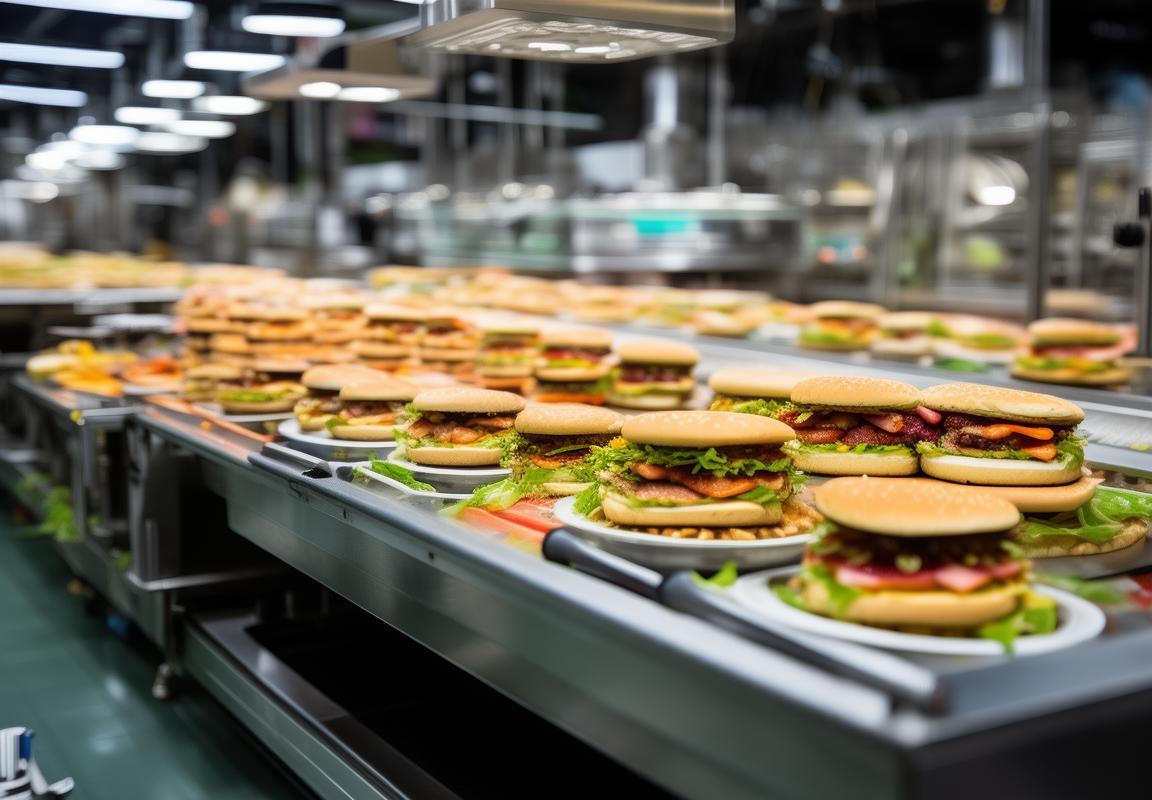
Market Overview of Sandwich Grill Industry in Europe and the USA
The sandwich grill industry has seen significant growth in both Europe and the USA, driven by changing consumer preferences and the rise of fast-casual dining. In Europe, the market is characterized by a diverse range of flavors and an emphasis on health-conscious options. The US market, on the other hand, is marked by a strong focus on convenience and innovation.
In Europe, the sandwich grill industry is highly competitive, with a variety of local and international brands vying for market share. The region’s consumers are increasingly seeking quick, yet high-quality meals, leading to a surge in demand for sandwich grills in cafes, delis, and fast-food chains. The popularity of gourmet sandwiches, which often feature artisanal bread and premium fillings, has further fueled market growth. Additionally, the rise of health-conscious eating habits has prompted the development of low-carb, gluten-free, and vegetarian sandwich options.
The US sandwich grill market is similarly dynamic, with a strong emphasis on convenience and speed. Fast-casual dining has become a significant segment, offering customers a balance between the quality of a sit-down meal and the speed of fast food. The rise of gourmet fast-casual chains has introduced a new wave of innovation, with unique sandwiches and customizable options becoming increasingly popular. The market is also witnessing a growing interest in international flavors, with a mix of traditional American sandwiches and global culinary influences.
In Europe, the sandwich grill industry is not without its challenges. The high cost of ingredients, particularly fresh produce, can impact pricing and profitability. Additionally, the need to comply with stringent food safety regulations and the desire to offer sustainable options are ongoing concerns. Despite these challenges, the industry is adapting, with many operators focusing on local sourcing and sustainable practices.
In the US, the competitive landscape is shaped by a mix of large chains and independent operators. The large chains often have the advantage of economies of scale and brand recognition, but independent sandwich shops are gaining traction due to their ability to offer a more personalized experience. The market is also influenced by the rise of food trucks and pop-up restaurants, which provide a flexible business model and can quickly tap into new markets.
The sandwich grill industry in both Europe and the USA is also seeing a technological shift. The use of automated equipment and software to streamline operations and improve efficiency is becoming more prevalent. This includes the integration of digital menu boards and online ordering systems, which enhance the customer experience and drive sales.
In Europe, the market is also influenced by cultural factors, with certain regions known for their particular sandwich styles. For example, the French have a long-standing tradition of the croque-monsieur and croque-maggiore, while the UK is famous for its full English breakfast sandwiches. These cultural influences contribute to the diversity of the market and the variety of offerings available to consumers.
In the US, the market is further segmented by demographic preferences. For instance, younger consumers are more likely to seek out gourmet and health-focused options, while older generations may prefer traditional, comfort food-style sandwiches. This diversity in consumer tastes has led to a fragmented market, with a wide array of niche players and specialty sandwich shops.
Overall, the sandwich grill industry in both Europe and the USA is a vibrant and evolving sector. It is driven by consumer demand for convenient, high-quality meals that cater to a wide range of tastes and dietary preferences. As the industry continues to grow, operators will need to stay innovative and responsive to changing trends and consumer needs.
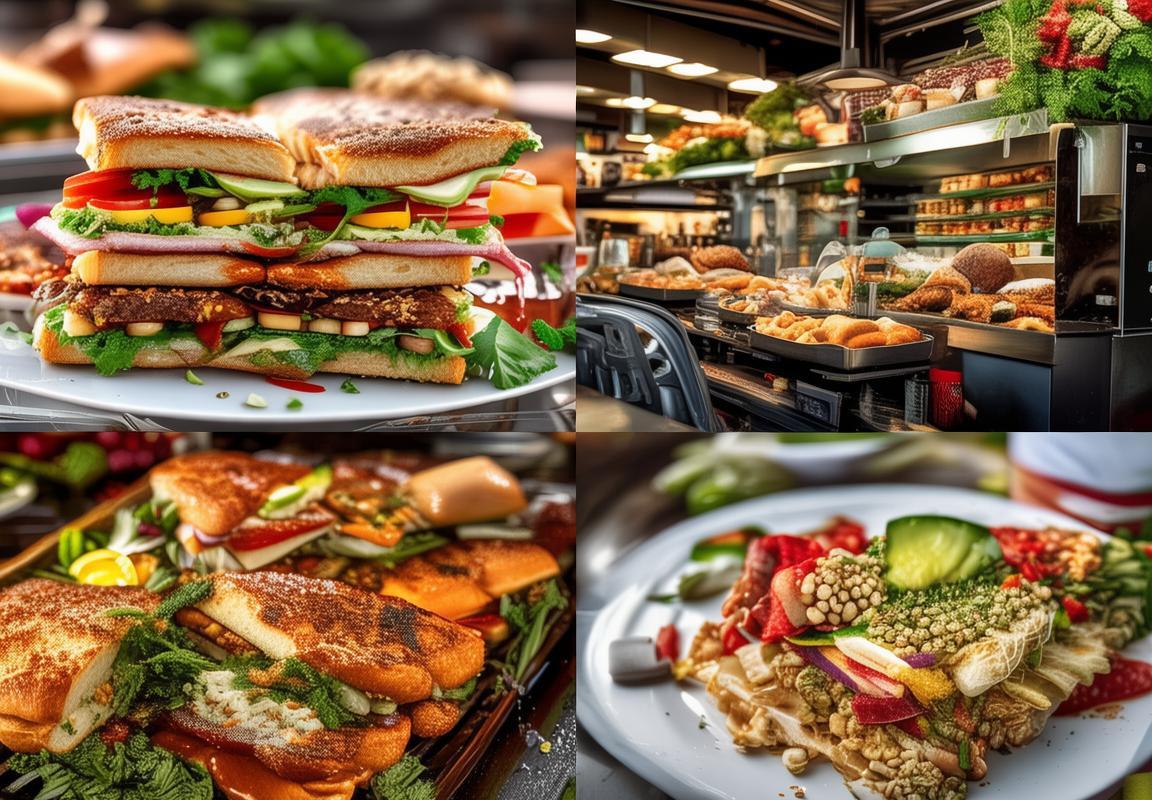
Key Features of Continuous Operation Sandwich Grill Plants
Continuous operation sandwich grill plants are designed to streamline the production process, ensuring a seamless flow of sandwiches from preparation to final cooking. Here’s a detailed look at the key features that define these innovative facilities:
-
High-Speed Production Lines: These plants are equipped with rapid production lines that can handle a high volume of sandwiches in a short amount of time. The lines are designed to minimize downtime and maximize output, making them ideal for high-demand environments.
-
Automated Cooking Systems: The heart of a continuous operation sandwich grill plant lies in its automated cooking systems. These systems use advanced technology to ensure consistent and even cooking, reducing the need for manual intervention and improving the quality of the final product.
-
Modular Design: Modular design is a hallmark of these plants, allowing for easy expansion and customization. Components can be added or replaced without disrupting the entire operation, making it adaptable to changing market demands and production needs.
-
Precision Temperature Control: Maintaining precise temperature control is crucial for the quality of grilled sandwiches. Continuous operation plants are equipped with sophisticated temperature control systems that ensure the right heat is applied at all times, resulting in perfectly cooked sandwiches.
-
Integrated Food Handling Equipment: These plants integrate various food handling equipment, such as conveyors, slicers, and fillers, to create a cohesive and efficient production process. This integration reduces the risk of cross-contamination and ensures that each sandwich is assembled with precision.
-
Sanitation and Hygiene: Continuous operation sandwich grill plants prioritize sanitation and hygiene to meet stringent food safety standards. They are designed with easy-to-clean surfaces and incorporate features like automated cleaning systems to maintain a clean and safe environment.
-
Energy Efficiency: Energy consumption is a significant concern in any food production facility. Continuous operation plants are designed with energy efficiency in mind, featuring advanced insulation and energy-saving technologies to reduce operational costs.
-
Customizable Software and Controls: The control systems in these plants are highly customizable, allowing operators to adjust settings based on specific product requirements. This flexibility ensures that the plants can cater to a wide range of sandwich recipes and variations.
-
Real-Time Monitoring and Data Analysis: Many modern continuous operation sandwich grill plants are equipped with real-time monitoring systems that track production metrics and performance data. This allows for immediate adjustments and continuous improvement in the production process.
-
Scalability: As the demand for sandwiches grows, these plants are designed to scale up their production capabilities. Whether it’s through expanding the production line or integrating additional modules, these plants can accommodate increased output without compromising on quality.
-
Ergonomic Workstations: The design of these plants considers the well-being of the workers. Ergonomic workstations are provided to reduce the risk of workplace injuries and improve overall productivity.
-
Quality Assurance: Continuous operation sandwich grill plants often include quality assurance stations where products are inspected before being packaged. This ensures that only the highest quality sandwiches reach the consumer.
-
Flexibility in Product Line-Up: The ability to switch between different types of sandwiches or to adapt to seasonal flavors is a key feature. These plants are designed to handle a variety of products, from classic ham and cheese to gourmet options.
-
Integration with Packaging Systems: To maintain the integrity of the sandwiches, these plants are often integrated with automated packaging systems. This ensures that the product is sealed and protected during transport and storage.
-
Training and Support: Recognizing the importance of skilled operators, many continuous operation sandwich grill plants offer comprehensive training programs and ongoing support to ensure that the facilities are operated efficiently and safely.
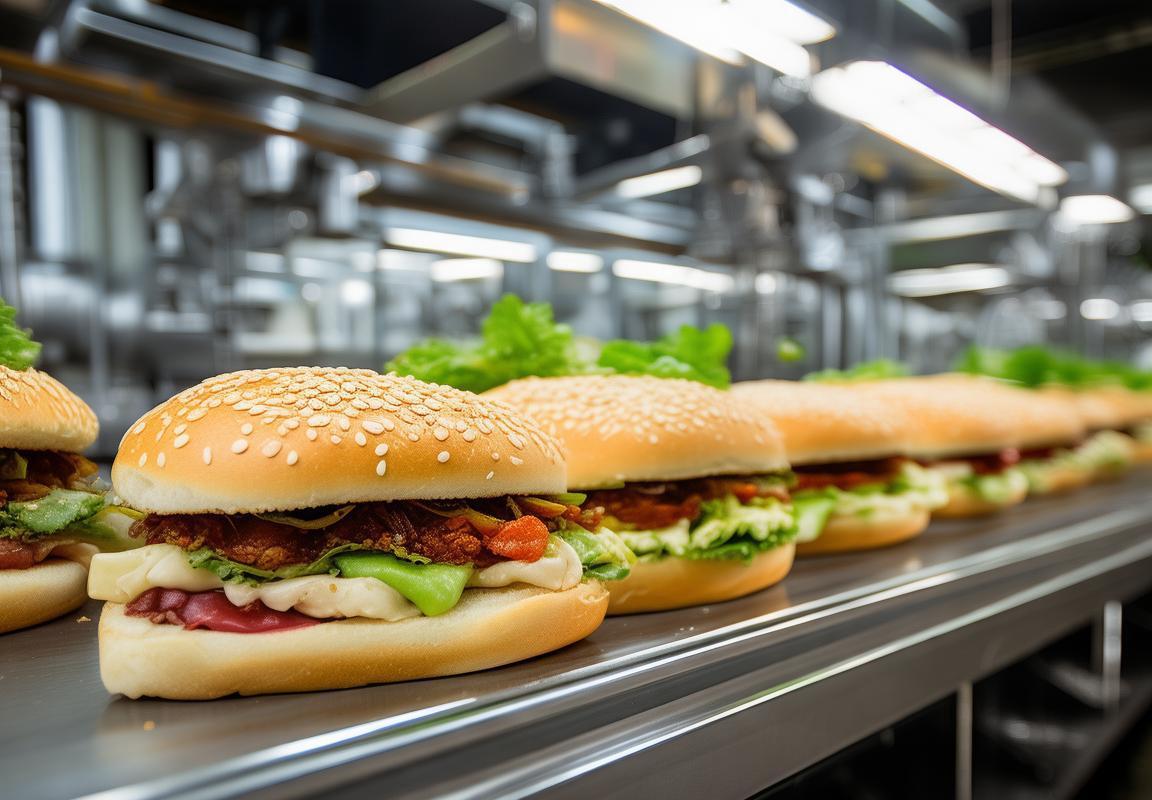
Technological Advancements in Sandwich Grill Plants
In the ever-evolving landscape of the foodservice industry, sandwich grill plants have seen remarkable technological advancements that have not only enhanced efficiency but also improved the quality and consistency of the final product. Here’s a glimpse into some of the key technological breakthroughs shaping the industry:
The Integration of Smart AutomationModern sandwich grill plants are increasingly integrating smart automation systems that streamline operations. These systems can manage various aspects of the production process, from ingredient handling to final product packaging, ensuring minimal human error and maximizing output.
Precision Cooking TechnologyGrill plants have embraced precision cooking technology that allows for consistent temperature control and cooking times. Infrared heating elements, for instance, offer rapid and even heat distribution, reducing the risk of overcooking or undercooking sandwiches.
Advanced Food Handling SystemsThe handling of raw ingredients is a critical component of any sandwich production line. Advanced food handling systems, such as automated slicers and fillers, have been developed to reduce waste and increase speed. These systems are designed to handle a variety of ingredients with precision, ensuring that each sandwich is filled to the desired specifications.
Customizable Software for Variable Menu OptionsOne of the challenges in the sandwich industry is the need to cater to a diverse range of menu options. New software solutions allow for easy customization of production lines to accommodate different types of bread, fillings, and condiments. This flexibility is crucial for businesses that want to offer a variety of sandwiches to meet customer preferences.
Energy-Efficient EquipmentWith the growing emphasis on sustainability, energy-efficient equipment has become a standard in modern sandwich grill plants. Innovations like LED lighting, energy-saving motors, and programmable thermostats help reduce operational costs and minimize the plant’s environmental footprint.
Real-Time Monitoring and Data AnalyticsThe ability to monitor production in real-time is invaluable for ensuring quality control and identifying areas for improvement. Advanced data analytics tools can track performance metrics, such as throughput, yield, and equipment downtime, providing actionable insights to plant managers.
Robotic Solutions for Increased Speed and AccuracyRobotic technology has made significant strides in the food industry, and sandwich grill plants are no exception. Robots can perform repetitive tasks with high precision, such as placing fillings on sandwiches or packaging them. This not only increases speed but also ensures a consistent quality across all products.
Modular Design for ScalabilityAs businesses grow, the need for scalable solutions becomes paramount. Modular design in sandwich grill plants allows for easy expansion and reconfiguration. This means that as a company’s menu expands or as demand increases, the plant can be adapted without significant downtime or investment in new equipment.
Sustainability FeaturesSustainability is a key consideration for many businesses today. New grilling technologies are designed to be more environmentally friendly, such as using renewable energy sources, reducing water usage, and incorporating biodegradable materials in packaging.
Health and Safety InnovationsHealth and safety are paramount in food production. Technological advancements in sandwich grill plants include features like automated cleaning systems, which reduce the risk of cross-contamination. Additionally, ergonomic designs for equipment reduce the strain on workers, contributing to a safer work environment.
Customizable Cooking ProfilesDifferent sandwiches require different cooking profiles. Advanced grill plants now offer customizable cooking profiles that can be easily adjusted to accommodate various types of bread, proteins, and condiments. This ensures that each sandwich is cooked to perfection, regardless of the ingredients used.
These technological advancements represent a significant leap forward for the sandwich grill industry. By embracing these innovations, plants can achieve higher levels of efficiency, quality, and sustainability, ultimately leading to better customer satisfaction and business success.
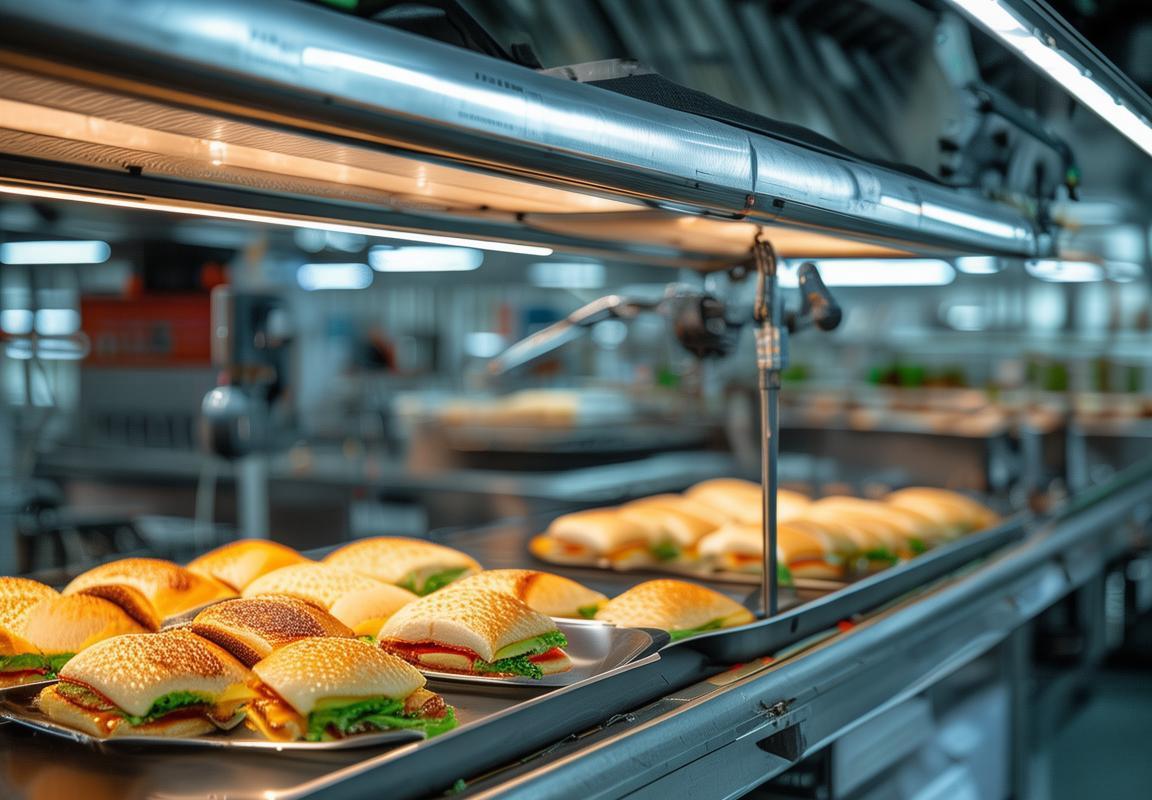
Market Analysis and Demand Factors
In the ever-evolving landscape of the sandwich grill industry, understanding the market analysis and demand factors is crucial for manufacturers and investors alike. The demand for efficient and high-quality sandwich grilling solutions has been on the rise, influenced by various factors that shape the market dynamics.
The surge in fast-casual dining trends has significantly impacted the demand for sandwich grill plants. As consumers seek quick, convenient, and healthy meal options, sandwich shops and cafes have seen a surge in popularity. This shift has led to an increased need for automated and continuous operation sandwich grill plants that can meet the high demand for freshly grilled sandwiches.
One key demand factor is the emphasis on food safety and hygiene. With foodborne illnesses making headlines, consumers are more conscious than ever about the cleanliness and quality of the food they consume. Sandwich grill plants equipped with advanced hygiene features and automated cleaning systems are becoming increasingly sought after to ensure the safety of the final product.
The demand for customization and variety is another critical factor driving the market. Consumers today are looking for unique and personalized food experiences. Sandwich grill plants that offer a wide range of ingredients, toppings, and configurations cater to this demand. The ability to quickly and efficiently customize sandwiches based on individual preferences is a significant advantage for operators looking to stand out in a competitive market.
Technological advancements in sandwich grill plants have also played a pivotal role in shaping demand. The integration of smart features, such as touch-screen interfaces and wireless connectivity, has made it easier for operators to manage and maintain their equipment. These innovations not only enhance the user experience but also contribute to increased efficiency and productivity.
The rise of online ordering and delivery services has created a new demand for sandwich grill plants that can handle large volumes of orders efficiently. With the growing trend of delivery-focused restaurants, there is a need for sandwich grill plants that can maintain consistent quality and output, even under high-pressure situations.
Geographic location and demographic shifts also influence demand for sandwich grill plants. Urban areas with high population density and a diverse workforce often have a higher demand for quick-service restaurants. As these areas expand, the need for sandwich grill plants capable of supporting large-scale operations increases.
Moreover, the demand for energy-efficient and environmentally friendly solutions is on the rise. Operators are increasingly looking for sandwich grill plants that offer sustainable features, such as energy-saving technologies and recyclable materials. This eco-conscious approach not only aligns with consumer values but also helps businesses reduce operational costs in the long run.
The competitive landscape of the sandwich grill industry is another demand factor to consider. As new players enter the market and established brands expand their offerings, there is a constant drive for innovation and differentiation. Sandwich grill plants that can offer unique features, such as adjustable heat settings or advanced cooking capabilities, are more likely to attract customers and secure a competitive edge.
Finally, the demand for sandwich grill plants is also influenced by the global foodservice market. As people travel more frequently and expose themselves to diverse culinary experiences, there is a growing interest in international flavors. Sandwich grill plants that can accommodate a variety of international recipes and cooking techniques are likely to find a receptive market.
In conclusion, the market analysis and demand factors for sandwich grill plants are multifaceted, encompassing everything from consumer preferences and technological advancements to environmental concerns and market competition. Understanding these factors is essential for stakeholders to navigate the dynamic landscape and capitalize on the opportunities that arise in this growing industry.
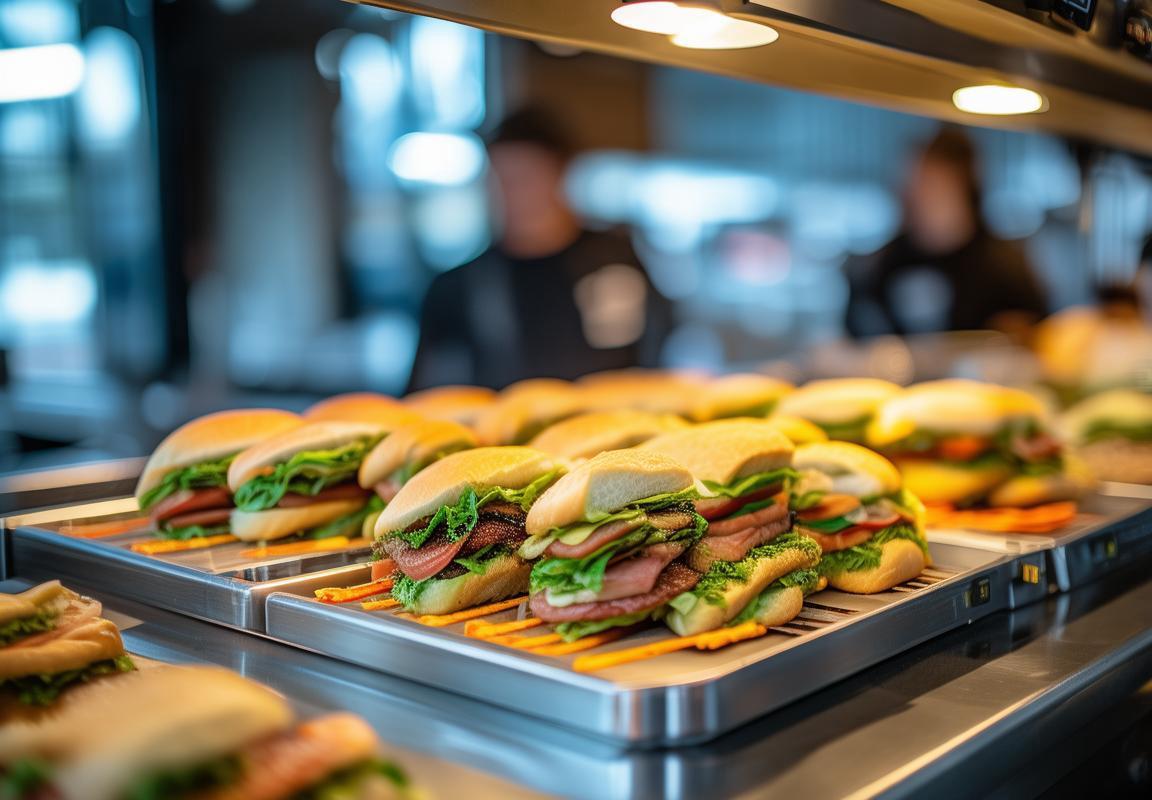
Competitive Landscape
In the competitive landscape of the sandwich grill industry, several key players have emerged as leaders, each bringing unique strengths and strategies to the table.
Players like Wolfgang Puck Worldwide, Inc. and Nestlé have leveraged their brand recognition and culinary expertise to carve out significant market shares. Wolfgang Puck’s innovative approach to fast-casual dining has been a game-changer, offering high-quality, gourmet sandwiches that appeal to both casual diners and food enthusiasts. Nestlé, on the other hand, has expanded its presence through acquisitions and partnerships, diversifying its portfolio and enhancing its market reach.
Local and regional chains, such as Subway and Panera Bread, have also made their mark with their extensive menu options and focus on fresh ingredients. Subway’s global presence and franchising model have allowed it to become a household name, while Panera Bread has gained a loyal following through its commitment to natural and organic ingredients.
Fast-food giants like McDonald’s and Burger King have not been left behind. They have introduced sandwich options that cater to the growing demand for healthier choices, using fresh ingredients and emphasizing quality over quantity. These chains have also invested in technology to improve efficiency and customer experience, from drive-thru innovations to mobile ordering apps.
The rise of health-conscious consumers has led to a surge in demand for plant-based and vegetarian sandwich options. Companies like Beyond Meat and Impossible Foods have capitalized on this trend by developing meatless alternatives that mimic the taste and texture of traditional sandwiches. Their products have found their way into fast-casual restaurants, supermarkets, and even into the kitchens of home cooks.
The competitive landscape is also shaped by the rise of food delivery services. Apps like Uber Eats, DoorDash, and Grubhub have changed the game for sandwich retailers, allowing them to reach a wider audience and compete with traditional dine-in and takeout options. These platforms have not only expanded market reach but have also created new opportunities for collaboration between sandwich brands and delivery services.
In the world of sandwich grills, innovation is not limited to the food itself. Equipment manufacturers are constantly pushing the boundaries of technology, offering more efficient and user-friendly grill systems. These advancements not only improve the quality of the end product but also reduce labor costs and increase output.
The competitive landscape is also influenced by the dynamic nature of consumer preferences. Trends like the popularity of gourmet sandwiches, the demand for fast-casual dining experiences, and the growing importance of sustainability have all played a role in shaping the competitive environment. Sandwich retailers must stay agile, adapting their offerings to meet the changing demands of their customers.
In conclusion, the competitive landscape of the sandwich grill industry is multifaceted, with a mix of global players, regional chains, and niche brands all vying for market share. The key to success lies in understanding consumer trends, embracing technological advancements, and maintaining a balance between innovation and quality. Whether through unique culinary experiences, efficient operations, or strategic partnerships, those who navigate this landscape effectively will undoubtedly thrive.
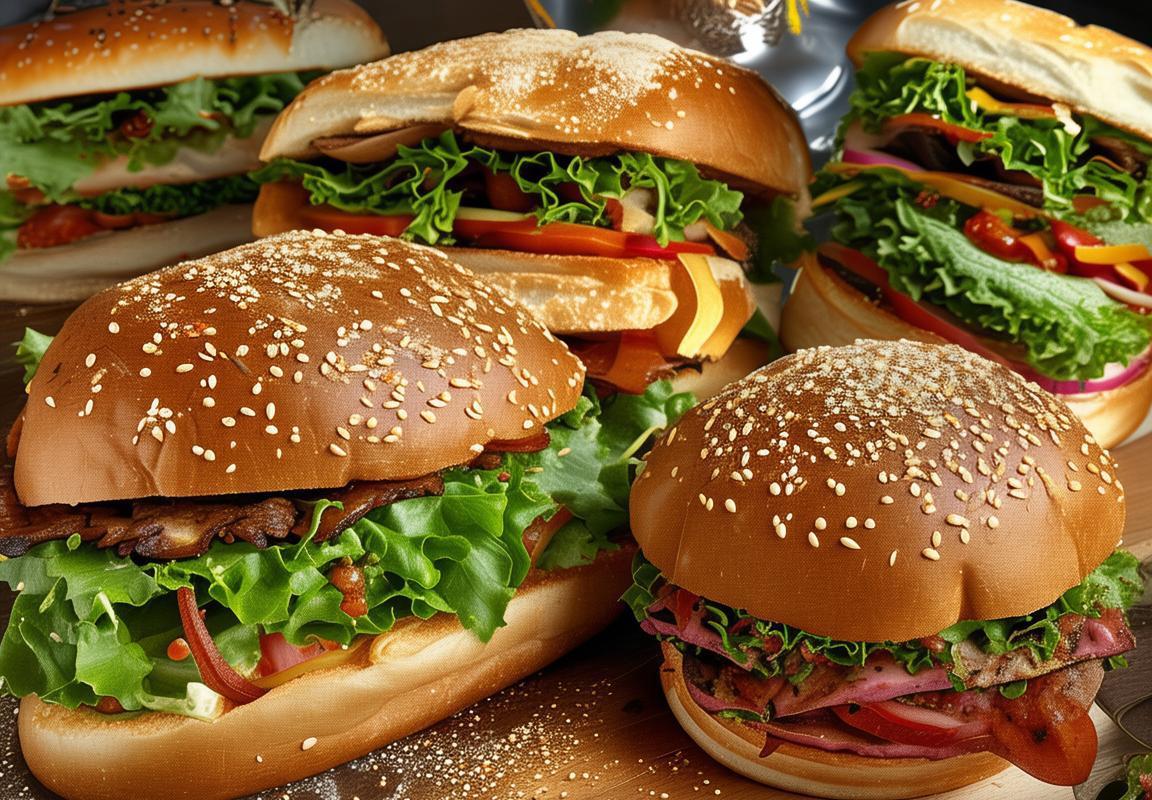
Regulatory Environment and Compliance
In the ever-evolving landscape of the food industry, the regulatory environment plays a pivotal role in shaping the operations of sandwich grill plants. Compliance with stringent standards is not just a legal requirement but also a testament to the quality and safety of the products being served. Let’s delve into the nuances of the regulatory environment and compliance issues that these plants must navigate.
The Importance of Food Safety RegulationsEnsuring food safety is paramount in the sandwich grill industry. Regulations like the Food Safety Modernization Act (FSMA) in the United States and the European Union’s General Food Law (GFL) emphasize the need for a proactive approach to food safety. These laws require sandwich grill plants to implement risk-based preventive controls, which often involve regular inspections and the adoption of the Hazard Analysis and Critical Control Points (HACCP) system.
HACCP ImplementationHACCP is a systematic approach to managing food safety that focuses on identifying, evaluating, and controlling biological, chemical, and physical hazards. Sandwich grill plants must establish HACCP plans tailored to their specific processes. This includes monitoring and controlling critical control points, such as temperature, time, and cross-contamination risks, to ensure that the final product is safe for consumption.
Sanitation and Hygiene StandardsMaintaining a clean and hygienic environment is crucial in preventing foodborne illnesses. Regulations demand that sandwich grill plants adhere to strict sanitation standards. This involves regular cleaning and disinfection of equipment, proper waste management, and the training of staff in food safety and hygiene practices. Compliance with these standards not only protects consumers but also minimizes the risk of product recalls and legal action.
Environmental RegulationsThe environmental impact of food production cannot be overlooked. Sandwich grill plants must comply with environmental regulations that govern emissions, waste disposal, and resource usage. This includes adhering to air and water quality standards, as well as managing the disposal of grease traps, food waste, and packaging materials. Compliance with these regulations often requires the implementation of sustainable practices and the use of eco-friendly technologies.
Employee Health and SafetyThe health and safety of employees are also under the microscope of regulatory bodies. Regulations such as the Occupational Safety and Health Administration (OSHA) in the USA and the Health and Safety at Work etc. Act 1974 in the UK dictate the workplace standards that sandwich grill plants must uphold. This includes providing a safe working environment, ensuring proper use of machinery, and offering regular health and safety training.
Certifications and AuditsObtaining certifications like ISO 22000, which focuses on food safety management systems, is a common compliance measure for sandwich grill plants. These certifications often require regular audits to ensure ongoing compliance. External audits by third-party organizations are a way for companies to demonstrate their commitment to quality and safety to consumers and regulatory authorities alike.
Global Harmonization EffortsWith the globalization of the food industry, sandwich grill plants that operate in multiple countries must navigate a complex web of international regulations. Efforts like the Global Food Safety Initiative (GFSI) aim to harmonize food safety standards across borders. Adhering to these global standards can help companies streamline their operations and reduce the burden of multiple compliance requirements.
The Impact of Compliance on OperationsCompliance with the regulatory environment can have a significant impact on the day-to-day operations of sandwich grill plants. It often requires a substantial investment in training, equipment, and processes. However, it also brings benefits such as enhanced brand reputation, increased consumer trust, and the ability to access new markets where compliance is a prerequisite for doing business.
In conclusion, the regulatory environment and compliance in the sandwich grill industry are multifaceted, encompassing food safety, environmental protection, employee health and safety, and international harmonization. Navigating these regulations is essential for the long-term success and sustainability of any sandwich grill plant.
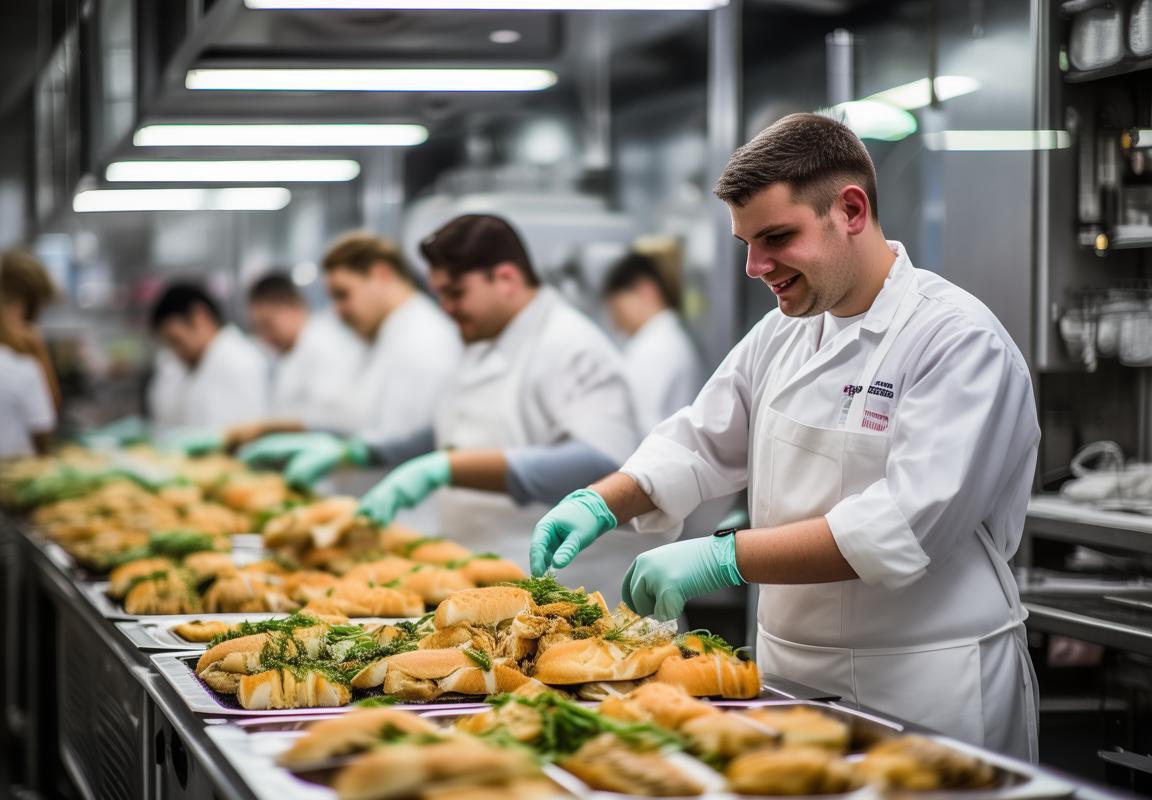
Case Studies: Successful Continuous Operation Sandwich Grill Plants
In the realm of sandwich grill manufacturing, several plants have achieved remarkable success through their continuous operation models. Let’s delve into some notable case studies that highlight their strategies and achievements.
At the heart of their success lies a meticulous focus on efficiency and innovation. One such plant, known for its state-of-the-art continuous operation, has managed to streamline its production process, reducing downtime significantly. This has allowed the plant to maintain a consistent output, meeting the demands of a rapidly growing market.
Another plant has made waves with its commitment to sustainability. By incorporating energy-efficient technologies and eco-friendly materials, they’ve not only reduced their environmental footprint but also lowered operational costs. This dual approach has resonated with consumers, leading to increased brand loyalty and market share.
Yet another standout plant has embraced automation to drive its continuous operation. With a sophisticated system of robotic arms and automated conveyors, they’ve eliminated human error and increased throughput. The plant’s ability to produce sandwiches at a rapid pace without compromising on quality has captured the attention of both distributors and end-users.
In terms of quality control, a leading continuous operation sandwich grill plant has implemented rigorous protocols. Regular checks and balances throughout the production line ensure that each sandwich meets stringent safety and quality standards. This unwavering commitment to excellence has solidified their position as a trusted name in the industry.
One plant has successfully leveraged data analytics to optimize its continuous operation. By closely monitoring key performance indicators (KPIs) and making data-driven decisions, they’ve been able to identify bottlenecks and make real-time adjustments. This proactive approach has enabled them to maintain a seamless workflow and consistently deliver high-quality sandwiches.
Another case study showcases a plant that has excelled in supply chain management. Through strategic partnerships with raw material suppliers and logistics providers, they’ve achieved a high level of efficiency. This seamless integration of the supply chain has allowed them to scale their operations while maintaining a competitive edge.
Innovation in product development has also played a significant role in the success of these continuous operation sandwich grill plants. They’ve introduced a variety of flavors and customization options, catering to diverse consumer preferences. This ability to adapt and offer unique products has helped them stay ahead of the competition.
One plant has taken a bold step by investing in research and development. By constantly exploring new technologies and processes, they’ve been able to enhance their continuous operation model. This commitment to innovation has not only improved their production capabilities but also opened doors to new markets and opportunities.
Another plant has focused on employee training and development. By investing in their workforce, they’ve fostered a culture of continuous improvement and teamwork. This has resulted in higher productivity and a more efficient operation.
A notable plant has embraced digital transformation, integrating advanced software solutions into their continuous operation. This has allowed them to better manage inventory, track production, and improve overall efficiency. The digital tools have also facilitated better communication and collaboration among departments.
In terms of sustainability, a plant has implemented a comprehensive recycling program. By diverting waste from landfills and using recycled materials, they’ve minimized their environmental impact. This commitment to sustainability has been well-received by consumers and has helped the plant build a strong brand identity.
Lastly, a plant has excelled in marketing and brand building. By leveraging social media, influencer partnerships, and targeted advertising, they’ve successfully positioned their brand as a leader in the sandwich grill industry. This strategic approach has helped them capture the attention of consumers and maintain a competitive advantage.
These case studies highlight the various strategies and actions taken by successful continuous operation sandwich grill plants. From technological advancements to employee training and sustainability initiatives, these plants have demonstrated that continuous operation can be a recipe for success in the sandwich grill industry.
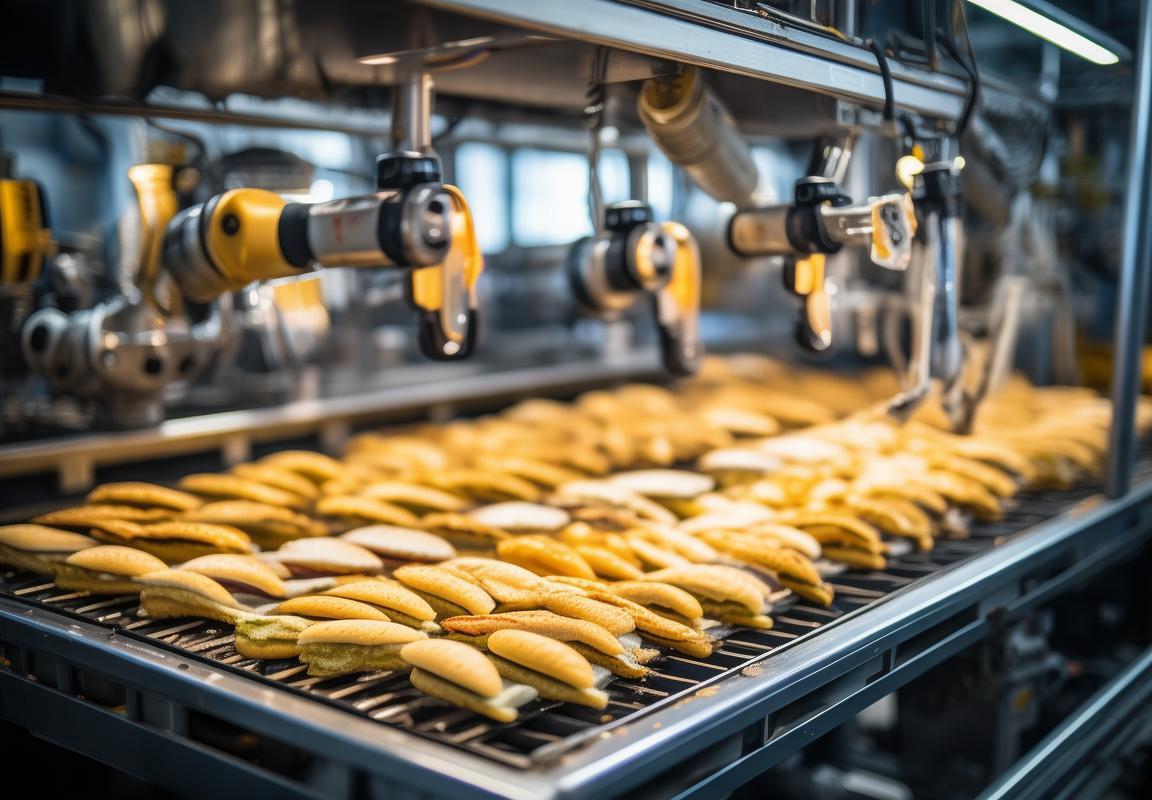
Future Prospects and Predictions
The landscape of the sandwich grill industry is rapidly evolving, and with it, a wave of innovative technologies is shaping the future of sandwich production. From automated grilling systems to energy-efficient solutions, these advancements are not only enhancing productivity but also paving the way for a more sustainable and efficient industry.
In recent years, the integration of IoT (Internet of Things) and AI (Artificial Intelligence) has become a cornerstone of technological progress in sandwich grill plants. These technologies enable real-time monitoring and predictive maintenance, reducing downtime and ensuring consistent quality across batches. Smart sensors can adjust the heat and cooking time based on the sandwich’s ingredients, ensuring that each product meets the desired specifications.
Energy efficiency has also become a focal point, with manufacturers investing in more sustainable practices. Innovations such as heat recovery systems and LED lighting are becoming standard, significantly reducing the plants’ carbon footprint and operational costs. These changes are not only beneficial for the environment but also for the bottom line of businesses.
The demand for convenience and variety in fast-casual dining continues to grow, driving the need for more flexible and adaptable sandwich grill plants. Customization options, such as adjustable cooking temperatures and modular designs, allow for easy integration of new products and ingredients, keeping the menu fresh and appealing to consumers.
Health and wellness trends are also influencing the industry. There’s an increasing demand for healthier, low-carb, and plant-based options. Sandwich grill plants are responding by incorporating these trends into their offerings, using whole grains, lean proteins, and fresh vegetables. This shift requires not only changes in the ingredients but also in the cooking processes to maintain quality and nutritional value.
The global sandwich market is witnessing a surge in cross-border collaborations and partnerships. International brands are setting up sandwich grill plants in various regions, bringing with them new flavors and techniques. This globalization is not only expanding market reach but also fostering a culture of culinary exchange and innovation.
In terms of market dynamics, the sandwich grill industry is experiencing a shift towards a more decentralized model. While large, centralized plants still play a significant role, there’s a growing trend of smaller, localized plants that cater to specific consumer preferences and dietary needs. This shift allows for faster response times to market demands and reduces the carbon footprint associated with long-distance transportation.
Predictions for the future of sandwich grill plants include a greater emphasis on automation and robotics. As technology continues to advance, we can expect to see more automated systems handling tasks such as ingredient handling, portion control, and packaging. This will not only increase efficiency but also reduce the risk of human error.
The integration of virtual and augmented reality is another area that is expected to gain traction. These technologies can be used for training staff, designing new products, and even for virtual taste tests, allowing for more precise and targeted product development.
The rise of e-commerce and online delivery services is also reshaping the industry. Sandwich grill plants are adapting by optimizing their operations for quick and efficient packaging and delivery, ensuring that the quality of the product is maintained throughout the supply chain.
In conclusion, the future of sandwich grill plants is bright, with a focus on technological innovation, sustainability, and customer satisfaction. As the industry continues to evolve, it will be crucial for manufacturers to stay ahead of the curve, embracing new technologies and market trends to meet the ever-changing demands of consumers.
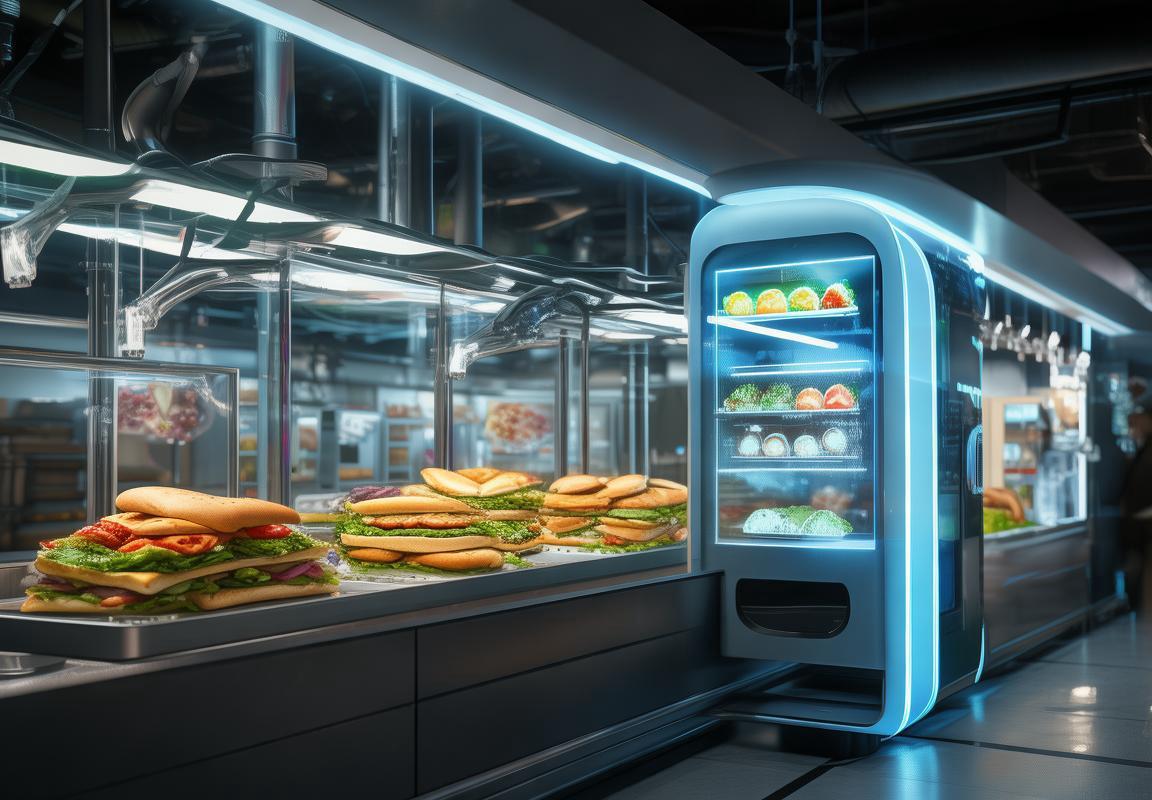
Conclusion
In the ever-evolving landscape of the sandwich grill industry, several factors have emerged as pivotal in shaping the future of continuous operation sandwich grill plants. From technological innovations to market trends, these elements are poised to redefine the way we perceive and utilize sandwich grills in both commercial and domestic settings.
The integration of smart technology has not only enhanced the efficiency of sandwich grill plants but has also opened up new avenues for customization and personalization. As consumer preferences shift towards healthier and more diverse food options, the ability to cater to these demands through continuous operation plants becomes increasingly crucial. This shift is likely to drive the industry towards a more sustainable and environmentally friendly approach.
Moreover, the rise of health-conscious consumers has led to a surge in demand for high-quality, nutritious sandwiches. Continuous operation sandwich grill plants are well-positioned to meet this demand by ensuring a consistent supply of fresh, well-cooked sandwiches. The scalability of these plants allows them to adapt to fluctuating market demands, making them a reliable choice for foodservice operators.
The global nature of the sandwich industry means that continuous operation sandwich grill plants must also navigate a complex web of cultural differences and regional preferences. This requires a flexible and adaptable approach to product development and marketing strategies. Companies that can successfully bridge these cultural gaps will be well-positioned to capture a larger share of the global market.
Innovation in cooking technology is another key driver of growth. Advancements such as adjustable heat settings, automated cleaning systems, and energy-efficient designs are not only improving the operational efficiency of sandwich grill plants but also reducing their environmental footprint. These innovations are likely to become standard features in the next generation of sandwich grill equipment.
Despite the promising outlook, challenges remain. Regulatory compliance is a significant concern for continuous operation sandwich grill plants, as they must adhere to stringent food safety and health standards. Ensuring that all aspects of the production process meet these requirements is essential for maintaining consumer trust and avoiding costly penalties.
The competitive landscape is also a critical factor. As more companies enter the market, the competition for market share is expected to intensify. This competition will drive further innovation and efficiency improvements, as companies strive to differentiate themselves through superior product quality, service, and customer experience.
Another area of focus is the integration of digital platforms. The ability to connect with customers through online ordering, delivery services, and mobile applications is becoming increasingly important. Continuous operation sandwich grill plants that can seamlessly integrate these digital solutions into their operations will have a competitive edge.
In terms of future prospects, the sandwich industry is expected to continue its growth trajectory. The rise of convenience food, coupled with the increasing pace of urbanization, is likely to drive demand for quick-service restaurants and foodservice outlets that offer sandwiches. This presents an opportunity for continuous operation sandwich grill plants to expand their market reach.
Predictions for the industry suggest that there will be a continued emphasis on sustainability and health. As consumers become more environmentally conscious, there will be a growing demand for eco-friendly packaging and sustainable sourcing practices. Similarly, the health benefits of sandwiches made with whole grains, lean proteins, and fresh vegetables will likely become more pronounced.
In conclusion, the future of continuous operation sandwich grill plants is bright, with opportunities for growth and innovation on multiple fronts. By staying ahead of market trends, investing in technology, and maintaining a focus on quality and sustainability, these plants can continue to meet the evolving needs of consumers and the foodservice industry.